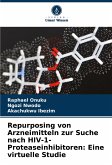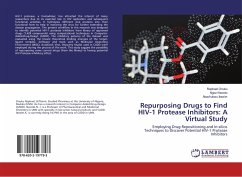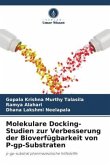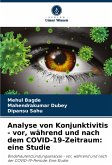
Broschiertes Buch
3. September 2024
Verlag Unser Wissen

25,99 €
Versandfertig in 6-10 Tagen
Broschiertes Buch
Employing Drug-Repositioning and In-silico Techniques to Discover Potential HIV-1 Protease Inhibitors
19. Dezember 2017
LAP Lambert Academic Publishing
25,99 €
Versandfertig in 1-2 Wochen
Broschiertes Buch
3. September 2024
Ediciones Nuestro Conocimiento
25,99 €
Versandfertig in 6-10 Tagen
Broschiertes Buch
3. September 2024
Sciencia Scripts
25,99 €
Versandfertig in 6-10 Tagen
Broschiertes Buch
Empregar técnicas de reposição de fármacos e técnicas in silico para descobrir potenciais inibidores da protease do VIH-1
3. September 2024
Edições Nosso Conhecimento
25,99 €
Versandfertig in 6-10 Tagen
Broschiertes Buch
Impiegare tecniche di riposizionamento dei farmaci e tecniche in-silico per scoprire potenziali inibitori della proteasi dell'HIV-1
3. September 2024
Edizioni Sapienza
25,99 €
Versandfertig in 6-10 Tagen
Broschiertes Buch
Utilisation de techniques de repositionnement de médicaments et in silico pour découvrir des inhibiteurs potentiels de la protéase du VIH-1
3. September 2024
Editions Notre Savoir
Ähnliche Artikel

Broschiertes Buch
31. Mai 2024
Verlag Unser Wissen

Broschiertes Buch
29. Januar 2025
Verlag Unser Wissen

Broschiertes Buch
p-gp-substrat pharmazeutische hilfsstoffe
30. Dezember 2023
Verlag Unser Wissen


Broschiertes Buch
Bindehautentzündungsanalyse - vor, während und nach der COVID-19-Periode: Eine Studie
29. September 2024
Verlag Unser Wissen

Broschiertes Buch
Einsatz von Oxytocin bei der Behandlung von postpartalen Blutungen in Maiduguri, Nigeria
10. Dezember 2024
Verlag Unser Wissen
Ähnlichkeitssuche: Fact®Finder von OMIKRON
